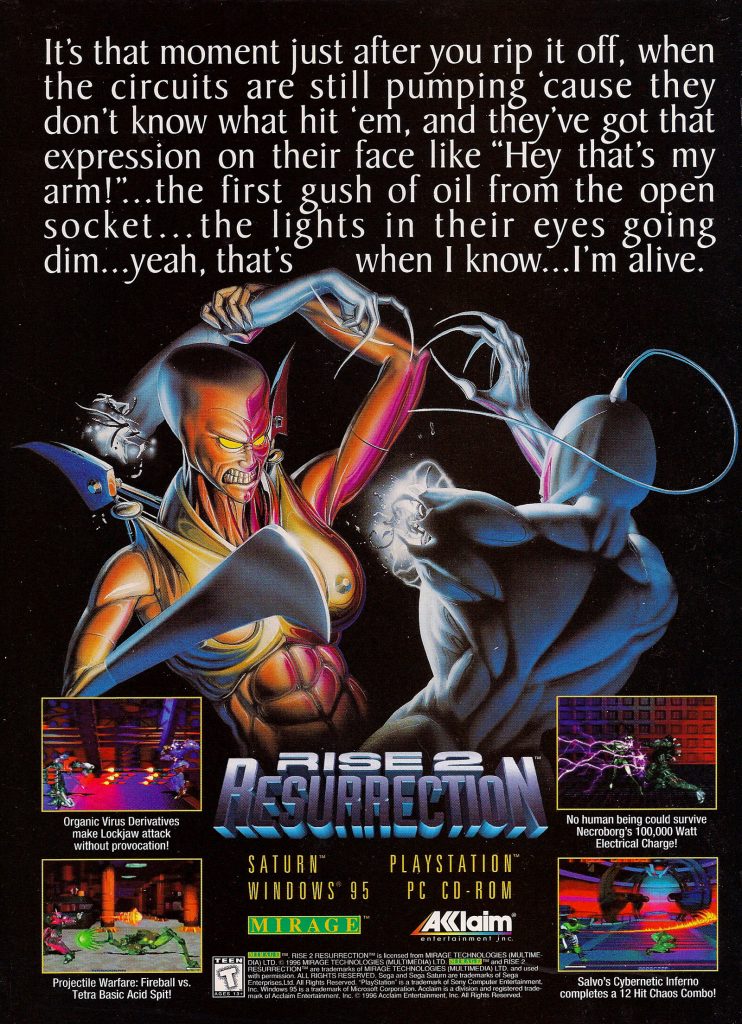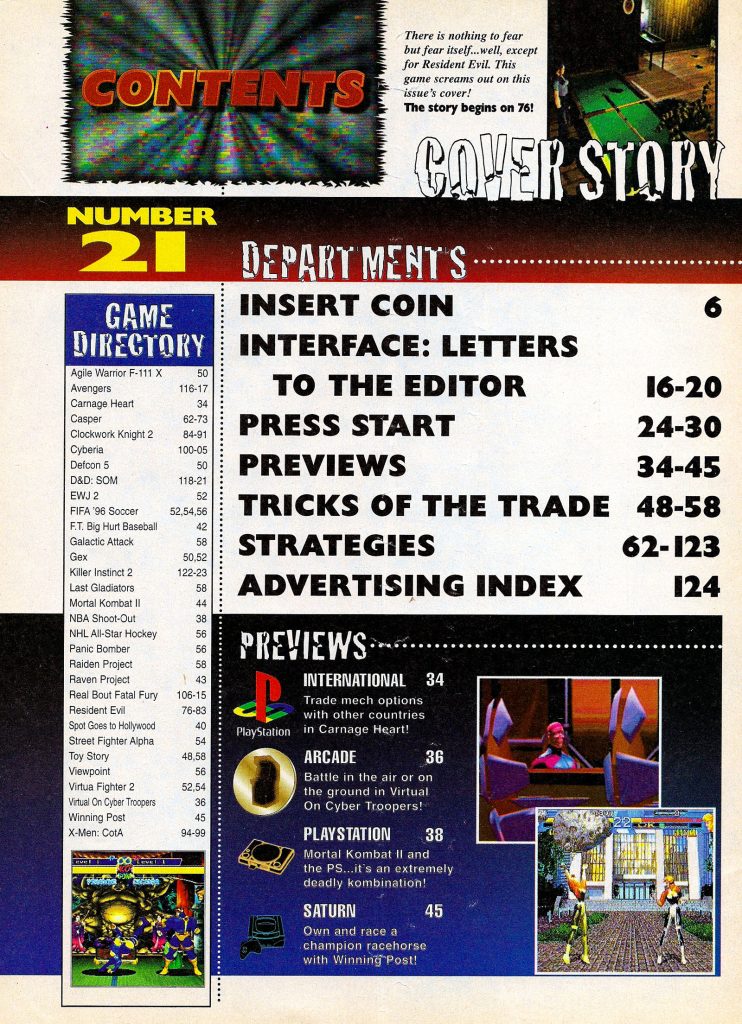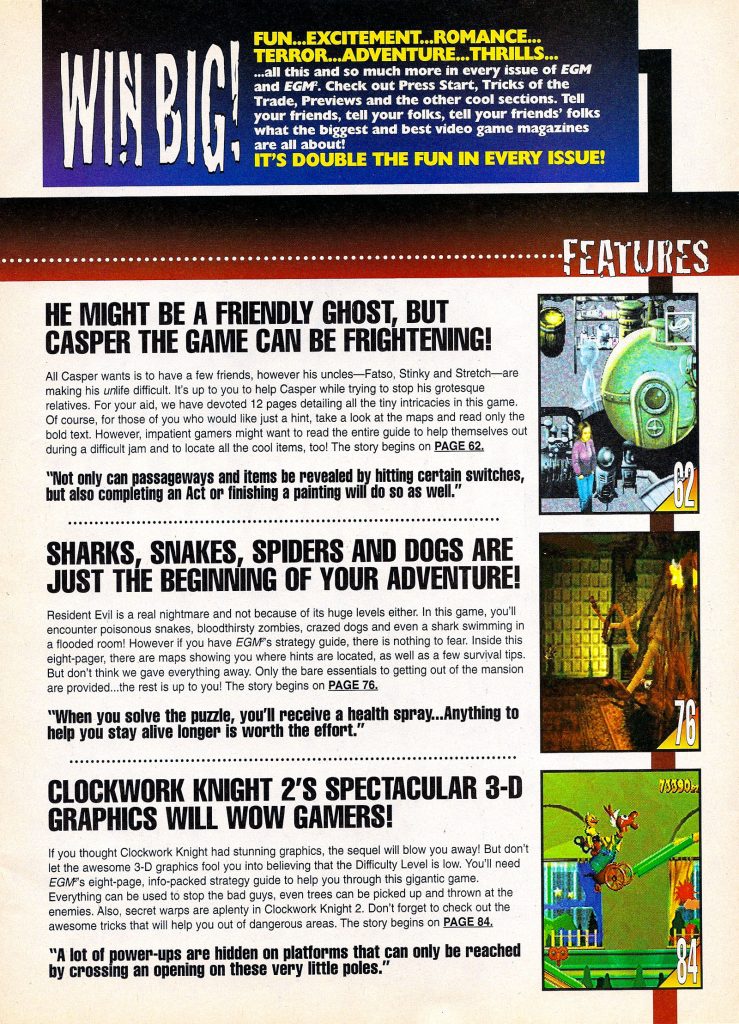Source: EGM 2 – Issue Number 21 – March 1996
The mid to late 1990s was such a boom time for video game magazines. In fact, one 200-300 (or more) page magazine wasn’t enough for EGM so for a few years they published a second 100-200 page magazine each month called EGM 2 (or EGM^2 or EGM “squared” I guess). The March 1996 issue includes:
- Insert Coin – This months editorial opines on the superiority of the games being developed overseas vs. the full motion video crap that seemed to be a craze (among developers at least) in the U.S. at the time.
- Interface: Letters to the Editor – The letter of the month is about the constant delay in games being released at the time. There are also letters regarding Virtua Cop, Twisted Metal, Doom on the Super NES, the CD-i and what has happened to it, the downfall of the Jaguar, and more.
- Press Start – The news this month includes: Atari denies changes to gaming business despite rumors otherwise; Sony and Sega release sales numbers (400,000 for the Saturn and 800,000 for the PlayStation); Sega stops manufacturing the 32X and Sega CD; 3DO releases device (3DO Game Guru) that acts as a memory card for saving games and as a Game Shark-like device for modifying games; ; Sony enters negotiations with Squaresoft for producing RPGs on the PlayStation; ACME (American Coin Machine Expo) comes to Orlando; Time Warner Interactive up for sale by parent company Time Warner Inc.
- Previews
- Carnage Heart (PlayStation International Preview, 100% complete)
- Virtual On (Arcade, 60% complete)
- NBA Shoot-Out (PlayStation, ?% complete)
- Spot Goes to Hollywood (PlayStation, ?% complete)
- Frank Thomas Big Hurt Baseball, ?% complete)
- Raven Project (PlayStation, 90% complete)
- Mortal Kombat II (PlayStation, ?% complete)
- Winning Post (Saturn, ?% complete)
- Tricks of the Trade – The trick of the month is for Toy Story for the Genesis and shows you how to get invincibility and level select. There are also tricks and cheat codes for Agile Warrior F-IIIX (PlayStation), Defcon 5 (PlayStation), Gex (PlayStation), Virtual Fighter 2 (Saturn), Earthworm Jim 2 (Super NES), Fifa ’96 Soccer (PlayStation), Street Fighter Alpha (PlayStation), Panic Bomber (Virtual Boy), NHL All-Star Hockey (Saturn), Viewpoint (PlayStation), Galactic Attack (Saturn), Last Gladiators (Saturn), Toy Story (Super NES), and Raiden Project (PlayStation).
- Strategies
- Casper (multisystem) – A detailed walk-through for this 3D adventure game featuring the friendly ghost.
- Resident Evil (PlayStation) – A strategy guide and maps for this classic survival horror game.
- Clockwork Knight (Saturn) – A stage by stage guide of this unique adventure game.
- X-Men: Children of the Atom (Saturn) – A guide to this fighting game including tips for different modes and a guide to all of the characters.
- Cyberia (multisystem) – A walk-through that provides the easiest routes in this cyberpunk themed game.
- Real Bout Fatal Fury (Neo Geo/Arcade) – A guide to all the characters and their moves for this classic 2D fighter.
- Avengers in Galactic Storm (Arcade) – Another fighting game guide. Despite also featuring Marvel characters, this one by Data East isn’t as good as X-Men by Capcom.
- Kill Instinct 2 (Arcade) – Yet another fighting game guide. This one also features codes for stage selects, speed-ups and more.

…and more!







